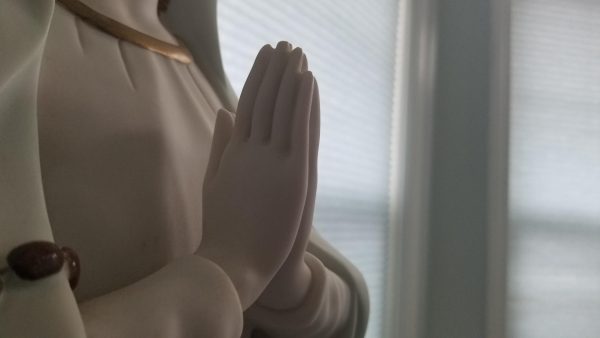Prosecution introduces autopsy evidence in Barker case
April 21, 2010
Friends and family of Christopher Kernich reacted with tears and gasps yesterday as graphic photos of Kernich’s autopsy were presented as evidence in the Barker trial.
Dr. George Sterbenz, Summit County Chief Deputy Medical Examiner, confirmed the death was a homicide, caused by craniocerebral blunt force trauma from multiple blows to both sides of Kernich’s head.
Detective Mark DiJerome confirmed Bureau of Criminal Identification and Investigation (BCI) reports examining DNA evidence on Barker’s clothes and shoes.
The prosecution also questioned DiJerome about photos of Jefferson’s car, which were taken Nov. 17, two days after the incident. Police also took photos that day of Jefferson’s hands, which showed no indication that he had been in a fight, and the clothes he was wearing the night of the assault, which also showed no visible DNA evidence.
Upon cross-examination by the defense, DiJerome said he found “no indication of DNA evidence on the shoes,” and they were given back to Jefferson after police examined them. No attempt was made by DiJerome to obtain his clothes until Mar. 29, after Jefferson admitted he lied to the Grand Jury on Mar. 25.
DiJerome called Jefferson in on Mar. 29 to conduct another interview, but the interview was not recorded. The defense pointed out that DiJerome had audio recording of all other witnesses interviewed up to that point.
DiJerome said he did not believe Jefferson was involved in the beating in the onset of the investigation because both Barker and Kelly had implicated each other in the beating, but no one implicated Jefferson.
The prosecution called Sterbenz to the stand after DiJerome. He said Kernich was pronounced dead on Nov. 21 by neurological standards, meaning his heart was still beating, but his brain was no longer alive and began decomposing.
His external injuries listed in the autopsy report included minor abrasions to his back, elbow and hand, as well as a laceration above his eye, and lacerations and bruising on the back of his head.
Internal examination revealed a fracture on the left side of his skull. Brain contusions were more extensive on the left side of the brain, but hemorrhaging was visible on the front and right side of the brain as well. Sterbenz determined the frontal injuries were due to a “posterior rotational fall.” When Kernich fell, he hit the back of his head, sending a shock wave that traveled to the front of the skull, inflicting a “contrecoup injury.”
Multiple blows delivered to the skull on both sides caused further hemorrhaging and swelling, tightening blood vessels and disrupting blood flow, causing hypoxic-ischemic encephalopathy, or lack of oxygen to the brain. As the brain swelled, it also became soft, what Sterbenz called “respirator brain,” the physical manifestation of brain death.
Members of Barker’s family were visibly upset from viewing the photo evidence, as his grandmother removed her glasses, wiping tears from her eyes. Barker remained silent, eyes directed downward at his legal pad for most of the proceedings.
Contact public affairs reporter Denver Collins at [email protected].
























